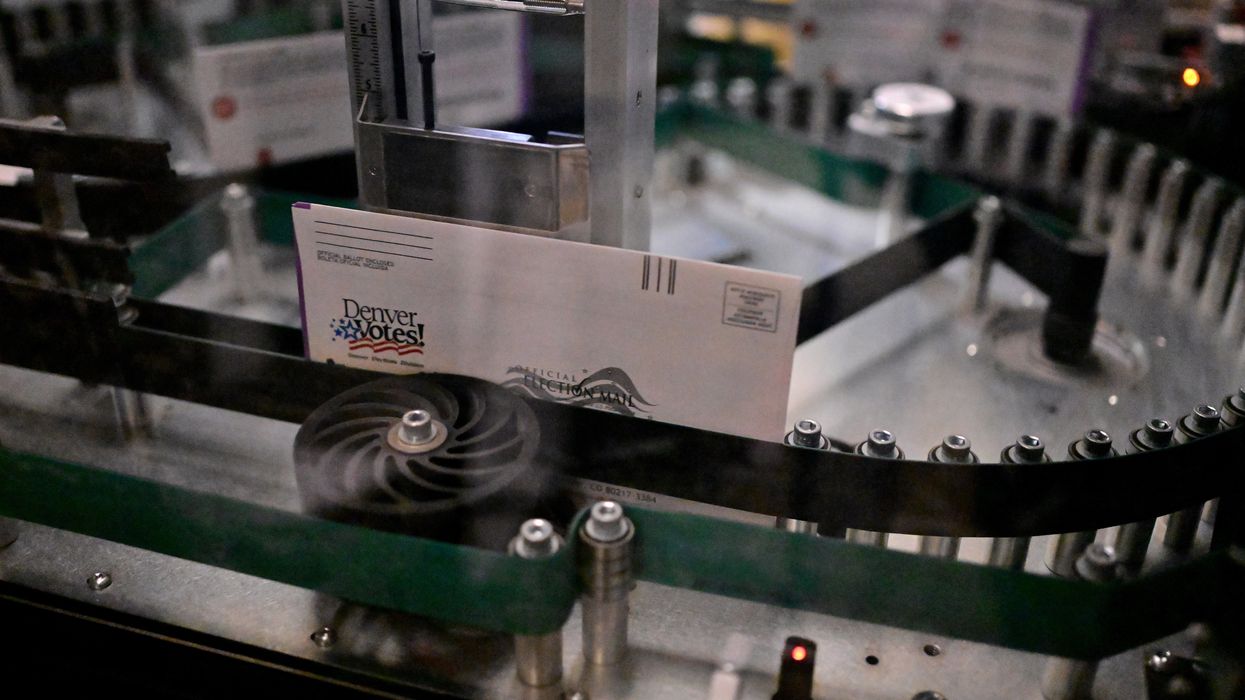Rosenfeld is the editor and chief correspondent of Voting Booth, a project of the Independent Media Institute.
In 2020’s presidential election, 17 million more Americans voted than in 2016’s election. That record-setting turnout was historic and even more remarkable because it came in the midst of a deadly pandemic. A key reason for the increase was most states simplified and expanded voting with mailed-out ballots — which 43 percent of voters used.
Some battleground states saw dramatic expansions. Michigan went from 26 percent of its electorate voting with mailed-out ballots in 2016 to 59 percent in 2020. Pennsylvania went from 4 percent to 40 percent. The following spring, academics found that mailing ballots to voters had lifted 2020’s voter turnout across the political spectrum and had benefited Republican candidates — especially in states that previously had limited the option.
But those trends did not stop Donald Trump from attacking mailed ballots during the 2020 campaign, after he lost the election and ever since, including as 2024’s Republican presidential nominee.
"It’s very simple. We want to get rid of mail-in voting,” Trump said at a late September rally in Pennsylvania after smearing the entire process. “The elections are so screwed up.”
Despite Trump’s opposition, and the fact that a third of Americans who voted by mail in 2020’s presidential election returned to voting at polling location in 2022’s midterms, Republicans have been sending mixed messages about using mail ballots this fall. Campaign staff have urged voters to vote via whatever option is most convenient — including by mail. But national and state party lawyers have filed dozens of lawsuits to complicate or thwart it.
In the run-up to Election Day, only one other area of election administration — voter registration — has drawn as much partisan litigation. Republicans and allied groups have filed dozens of suits that target mail-based voting, although Democrats have also sued to preserve the option and to respond to Republican suits. But unlike GOP claims of flawed voter rolls and widespread illegal voting, which have been debunked by credible experts and dismissed by courts, the litigation targeting voting by mail is trying a different tactic.
After Trump’s loss in 2020, and MAGA candidates’ losses in 2022, Republicans reacted by filing suits to try to block this voting option in wholesale fashion — or return it to pre-2020 levels. With few exceptions, most of those efforts failed. By 2024, a new strategy surfaced: targeting technicalities surrounding key steps in the process by voters and officials.
This line of legal attack didn’t come out of nowhere. Federal data shows that thousands of mail ballots are rejected in every election, in every state, due to mistakes by voters. These errors are unintentional. Voters may misdate, mis-sign return envelopes, not enclose ballots in paper sleeves inside envelopes or fail to meet return deadlines. Additionally, states have varying flexibility around allowing voters to fix mistakes.
Thus, more than a dozen legal lines of attack emerged, based on examining several dozen partisan lawsuits filed in the battleground states. These include fights over the design of ballot return envelopes, what voters and (sometimes witnesses) must fill out on those envelopes, disputes over where the ballots can be returned – including drop boxes, polling places and government offices — disputes over when ballots can be returned (on or after Election Day), and what election workers can do to help voters – if they make mistakes, including whether those voters can vote with another ballot.
In short, Republicans sought to tighten rules and deadlines — claiming existing protocols were untrustworthy — while Democrats and their allies sought to make them more flexible.
“Their [the GOP] legal strategy is to throw everything imaginable against the wall and see what sticks,” said Barbara Smith Warner, executive director of the nonpartisan, nonprofit National Vote at Home Institute, which helps states and counties offer this voting option. “Everything you hear is to a) sow distrust in the system, b) to decrease turnout — to keep people from voting — and c) to provide a foundation for the losers to contest the results.”
With just days left before Election Day, pro-Trump factions have lost far more lawsuits than they have won. But they have succeeded in complicating the process for voters and officials in some swing states, and more court decisions are expected by Election Day. That said, election law experts said that most of the restrictive litigation lacks merit and voters who return mailed-out ballots before Election Day should not have problems.
“The most significant of mail ballot cases, right at the moment, have to do with the deadline for returning ballots, and, in particular, challenges to state deadlines,” said Justin Levitt, a Loyola Marymount University constitutional law professor who has worked at the Department of Justice’s Civil Rights Division and advised both parties. “There is no serious challenge, at least as far as I’m aware, to any mail ballot that arrives by Election Day.”
Tomorrow, in part 2: States in the crosshairs — Arizona, Pennsylvania and more.




















